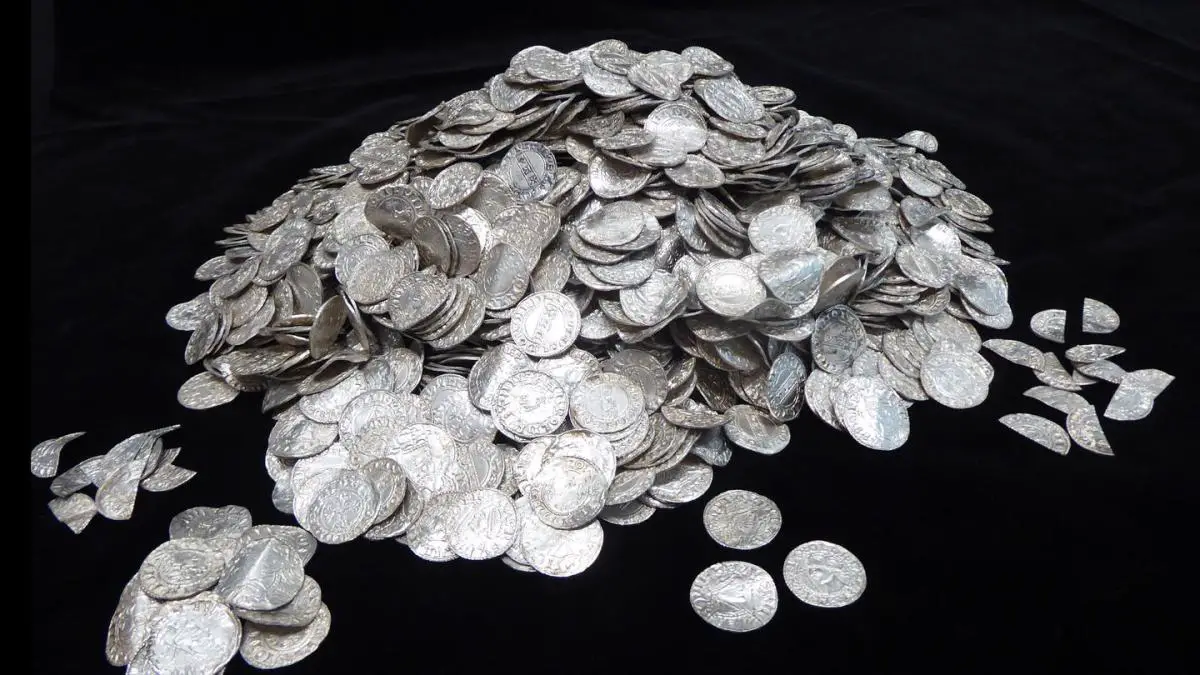-
Seven treasure hunters discovered 2,584 silver coins dating from 1066 to 1068 in a southwest England field.
-
Britain’s Treasure Act 1996 came into play, ensuring that museums had first dibs on purchasing the historic hoard. The treasure was purchased for a whopping $5.6 million.
-
The coins feature depictions of rulers from the time, split nearly evenly between rulers from before and after the Norman Conquest.
When Britain passed the Treasure Act 1996, it was for a time such as this. As part of the act, local and national museums must be given the first right to purchase any treasure discovered in the United Kingdom. And recently, the South West Heritage Trust jumped at the chance this act gave them to purchase a hoard of 2,584 silver pennies, which will be displayed at the British Museum. They paid a grand total of $5.6 million, making this the highest-valued treasure ever found in the UK.
“This remarkable hoard gives us unique insight into our country’s rich history and one of the most important moments in our history,” Chris Bryant, heritage minister, said in a statement from the British Museum, “when these islands were thrown into turmoil by the Norman Conquest.”
The find—dubbed the Chew Valley Hoard, thanks to the location of the discovery—was unearthed in 2019. Seven finders searching a farmer’s field in southwest England with metal detectors stumbled upon the coins, which date to the time of the Norman Conquest of England (between 1066 and 1068).
“The first one was a William the Conqueror coin—1,000 pounds, 1,500 pounds value,” Adam Staples, one of the seven finders of the hoard, said at an event at the British Museum, according to Associated Press. “It’s a really good find. It’s a find-of-the-year sort of discovery. And then we got another one, [we thought] there might be five, there might be 10. And it just got bigger and bigger.”
The find-of-the-year turned into a find-of-a-generation as 2,584 silver pennies were unearthed from the field, all dating to between 1066 and 1068. The coins are a mix of Saxon and Norman currency, showing a turning point in English history and covering the transition from Saxon to Norman rule. Experts believe that the coins were likely buried for safekeeping during the turmoil of the conquest.
Michael Lewis, head of the Portable Antiquities Scheme, said in the statement that the find is “incredible.”
Just under half the coins depict Harold II of 1066, the last crowned Saxon king of England. Just over half feature William I (also known as William the Conqueror), the first Norman king. Other than the ruler they depict, the two types of coins are quite similar. Each has the picture of a king’s head in profile on one side and an emblem on the other, the AP reports, with an elaborate cross for William and the word ‘peace’—written as ‘pax’—for Harold.
“The hoard symbolizes a pivotal moment in English history, and we are delighted to have made this acquisition so that it may be enjoyed by generations to come,” Sam Astill, chief executive of the South West Heritage Trust, said in the statement.
“We know that the people of Exeter rebelled against William in 1068 and that Harold’s sons, who were in exile in Ireland, came back and started mounting attacks along the River Avon down into Somerset,” said Amal Khreisheh, curator of archaeology at the South West Heritage Trust, according to the AP. “So, it’s probably against that background they were hidden.”
Under the Treasure Act 1996, any find that rises to the level of a treasure must be reported to the local coroner’s office within 14 days. If declared a treasure, it is offered for sale to a national or local museum, and the finder and landowner are eligible for a reward. This find was discovered near Bath in Northeast Somerset, and reported to the British Museum’s Portable Antiquities Scheme.
A committee set the value on the find. Half the money went to the landowner, and the other half was split between the seven who found the hoard. The National Lottery Heritage Fund and the Art Fund, along with smaller grants, made the purchase possible. The hoard will first be displayed at the British Museum before moving to the South West Heritage Trust.
“The Chew Valley Hoard,” Jenny Waldman, director of Art Fund, said in a statement, “is one of the most significant finds form the Norman Conquest, shedding new light on a fascinating period in English history.”
You Might Also Like


Leave a Comment